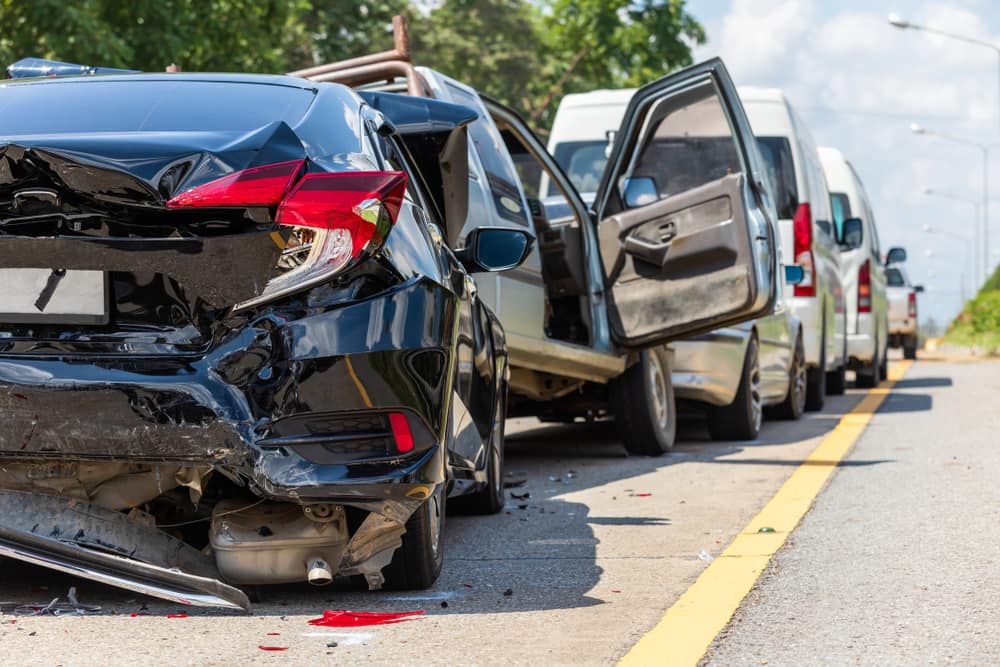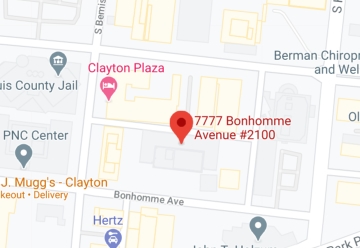Who Is at Fault for a Chain-Reaction Car Accident?

Determining who is at fault for a car crash can be complicated when only two vehicles are involved – and it can be exponentially more challenging for each additional vehicle you add. That’s why it can be especially challenging to determine liability in a chain-reaction accident.
If you were injured in a chain-reaction accident in St. Louis that wasn’t your fault, you deserve to be compensated by the responsible driver or drivers. An attorney from Sumner Law Group, LLC, can help you demand this compensation.
Contact us today for a free consultation with a Missouri chain-reaction car accident lawyer.
What Is a Chain-Reaction Car Accident and How Do They Happen?
A chain-reaction car accident is one where the effects of an initial collision lead to additional impacts involving more vehicles. These accidents can happen in many different ways.
One of the most common is when a car rear-ends another vehicle in front of it, and the second vehicle is pushed into a third vehicle. Another common cause of chain-reaction collisions is when a vehicle is merging or passing and sideswipes a car next to it, causing the second car to spin out of control and hit another vehicle.
Who Is Liable for Chain-Reaction Crashes?
No matter how complicated a multi-vehicle accident may seem, the concept of liability is ultimately simple: the person who causes an injury is liable for compensating the victim who suffered it. To establish fault and liability for a chain-reaction crash, investigators will look at various forms of evidence to determine whose actions led to both the initial and any subsequent impacts.
For example, in a chain-reaction accident involving multiple cars rear-ending each other, the driver in the rear who initially caused the crash would likely bear most of the responsibility for the crash. However, the lead driver may also share liability for the accident if they suddenly slammed on the brakes without cause. However, every accident is different, and liability can be determined only after an in-depth examination of the circumstances.
Evidence of Liability for a Chain-Reaction Accident
Because chain-reaction collisions can be quite complicated, it is crucial to gather as much evidence as possible from the crash scene and do so as quickly as possible. Some common types of evidence used in chain-reaction accident cases include things like:
- Police accident reports
- Medical records
- Surveillance videos
- Photos from the accident scene
- Eyewitness accounts
- Forensic accident reconstructions
- Testimony from expert witnesses
Why Insurance Companies Don’t Like to Settle Chain-Reaction Accident Claims
Chain-reaction accidents can involve many different people in several different vehicles, which means that they often result in significant medical bills, lost wages, pain, suffering, property damage, and other expensive losses. Establishing liability can also be complicated, so insurance companies are motivated to avoid settling in the hopes of pinning the blame (and the liability) on someone else.
That’s why it’s so important to have an experienced chain-reaction crash attorney who knows how to push back against the insurance company and demand the full compensation you’re entitled to.
Contact Our Experienced Personal Injury Attorneys Today for Help
If you’ve been injured in a chain-reaction crash, we want to hear from you. Contact Sumner Law Group, LLC, today to speak with an experienced car accident lawyer in Missouri at no cost to you.

Brent A. Sumner is the Managing Partner at Sumner Law Group, LLC. He focuses his practice exclusively on cases that involve serious personal injuries. Over the years, he has successfully represented thousands of individuals and families, recovering millions of dollars in compensation for injured accident victims.

